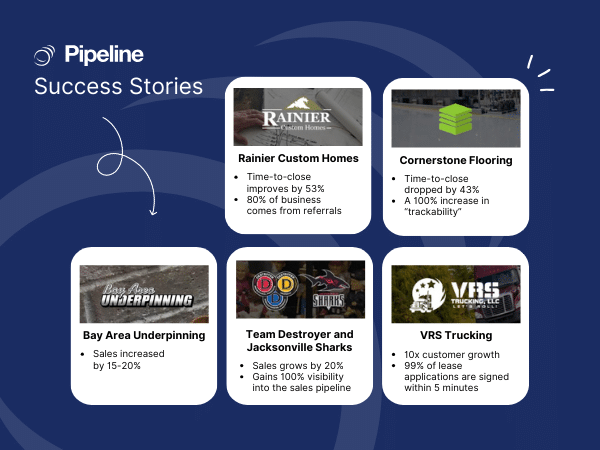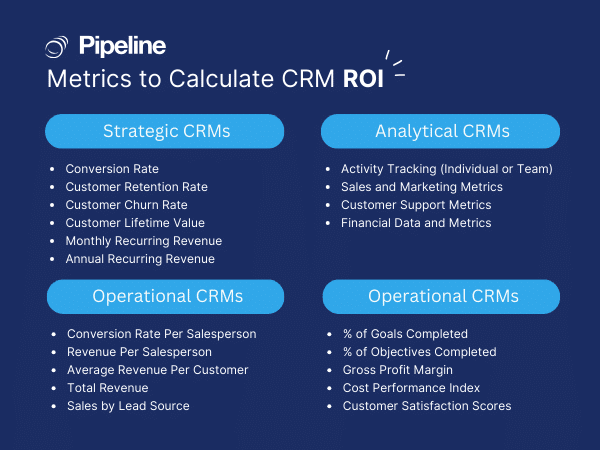What’s the average failure rate for CRM? According to CIO.com, the failure rate for CRM ranges from 18% to 69%.
Scott Edinger also claims a similar result in Harvard Business Review: “In my work with clients, when I ask executives if the CRM system is helping their business to grow, the failure rate is closer to 90%.”
If the failure rate is that high, how can businesses achieve any return on investment (ROI) of their CRM?
This blog will answer this question along with some other topics about CRM ROI, namely how to calculate the ROI, some basic sales and marketing KPIs to consider, and three effective ways to maximize your CRM return.
How Much Can a CRM Increase Revenue?
Contrary to the previous statistics, Nucleus Research claimed that CRM implementation can result in positive ROI, “For every dollar a company spends on CRM, it gets back $8.71 – 1.5 times more than the $5.60 they got just three years prior.” So, which data is true? One important thing about statistics is that they are a generalization.
In this case, the high numbers of CRM failures in the previous stats (and the positive CRM ROI above) represent hundreds of thousands of businesses. They are diverse in size, industry, products or services sold, and the CRM implementation (how the team uses it), among other conditions that can affect the ROI of a CRM adoption.
Therefore, to ensure an objective analysis in an isolated environment (controlled variables of industries and the CRM software), we’ll take a look at some of Pipeline CRM’s case studies. We’ll put their before and after performance under the loop to see if implementing a customizable Pipeline CRM software is worth the investment.
Here are some of the results of Pipeline CRM implementation after a few months of adoption, you can find the full stories here.
The data above shows that Pipeline CRM’s clients experienced positive changes in their sales books. This gives us a solid foundation to say that after Pipeline CRM implementation, you can expect a 20% sales gain and other growing metrics, including faster time-to-close, better contact management, and an increased number of leads.
If you’re curious about the ROI of your CRM, the following section will help you.
How to Calculate the ROI of CRM
Principally, calculating the ROI of CRM means analyzing the investment vs. gained profit.
Here is the formula to calculate it:
If we put this in an example, the calculation goes like this.
Let’s say you’re the owner of a small contracting company and have a five-person team that needs construction CRM software.
- CRM cost: $39 per user/month x 5 users = $195 per month.
This means the total cost of ownership (TCO) is $2,340 annually, and you add a $1,500 one-time premium onboarding to get the CRM system and your team up to speed. - Benchmarking: Sales before CRM 3-4 new customers per month. After CRM implementation, 15 new customers per month.
Next, you’ll need to calculate your before and after results.
| Before CRM adoption | After CRM adoption | |
| Number of customers per month | 3 | 15 |
| Average value per customer | $15,000 | |
| Sales revenue per month | $45,000 | $225,000 |
| Increase in sales revenue | 400% | |
If you have a 40% profit margin, this means from the $225,000 in sales, you earn $90,000 in profit per month or $1.8 million annually.
Now, we plug these figures into our formula, and we get 28.125% as the CRM ROI.
But, let’s not stop here. If we dig deeper into this example, we see other amazing growth happening to your business:
- You’re closing 275% more customers after CRM implementation.
- Your team maintains average order values of $15,000.
- You’ve got a pretty reasonable profit margin.
In this example, it is clear that a CRM implementation is worth every penny. For a $3,840 CRM adoption cost, you’ll earn $1,800,000 back, a 28.125% ROI.
Important Metrics to Calculate CRM Return on Investment
In the example above, we use net profit as the metric to calculate the CRM ROI.
This isn’t a set-in-stone rule. You can use other metrics that matter to your business to calculate the CRM ROI.
Related: A-Z Glossary of Sales Terminology
Below are some parameters that you can choose from based on the type of CRM you implement in your business. If you aren’t sure what your CRM type is, this blog will help you decide- what are the types of CRM?
Obviously, the metrics and KPIs you’re focused on will vary by business and industry. That said, if you want to maximize your CRM return on investment, you will need a clear idea of the specific goals you’re trying to accomplish and the metrics that determine or define a successful outcome.
| 💡 Decrease Time-to-Close and Increase Productivity by 50%
Free up time for selling and engaging your leads across multiple channels for greater success. Allow your sales team to focus on their most valuable tasks and 10x sales revenue. Learn more about Automations. |
How to Maximize CRM Return on Investment (In Half the Time)
The key to maximizing your CRM ROI is in the CRM implementation.
The more you utilize it, the more benefits you’ll gain. Likewise, the less you use it, the less you’ll gain. For instance, if you adopt an expensive CRM tool but don’t use it properly, you’ll get a low or even negative return on investment. This also applies to how loved the CRM is among your salespeople.
We know that some sales professionals still prefer using spreadsheets instead of CRM. This not only causes a negative ROI but also scattered data and siloed team collaboration, blocking your business from reaching its true potential.
Therefore, the goal here isn’t just about your sales reps using the CRM tool. It’s much more than that. If we’re going to maximize the value we receive from our CRM, we’ll need each employee to make practical and effective use of it.
So, how do you get your team to take the time to go through the transitional period and learn to use the selected CRM? It’s a three-step process.
Step 1: Give Your Team a Chance to Weigh in
If you expect your sales, marketing, and customer service teams to use the CRM in a way that maximizes your ROI, you’ll need to give them the chance to weigh in on key issues. If there’s no weigh-in, there’s no buy-in.
You have to get your team’s real thoughts and feelings on the matter out into the open. This doesn’t mean everyone has to agree, be happy, or be supportive of the decision. It simply means they need a chance to be heard.
Step 2: Choose a CRM, Then Onboard Your Team
Onboarding is a must-have. It’s the only way to overcome the inevitable transitional friction that comes with switching to something new.
Here are some onboarding checklists to maximize your return on investment:
- A customized training plan designed specifically for your business and your team
- A 30-minute kick-off call
- Schedule several training sessions within 30 days of the CRM implementation
- A dedicated one-on-one training with an Onboarding Manager
- Data analysis and import assistance
- 3 custom automation/task templates
| 💡 100% Onboarding Success Rate
Pipeline’s Customer Success team has a 100 percent success rate in improving the time-to-launch rate. The personalized assistance from professional CRM experts makes the sales process and CRM integration smooth, efficient, and profitable. Learn more. |
Step 3: Offer Incentives and Decide on Consequences
Your CRM functions as your eyes and ears. If you’re going to maximize your CRM return on investment, you’re going to need consistently high utilization rates.
This outcome means you’ll need to offer incentives and decide on consequences.
The incentives should be something valuable to your sales reps, such as gift cards, bonuses, certificates, or recognition. As for the consequences, you may want to consider zero or fewer commissions for sales reps who don’t use CRM in their daily jobs.
This may sound strict and cruel, but if your employees aren’t using your CRM system, you’re flying blind. You’re spending money on sales and marketing efforts with no way to measure the results.
CRM Implementation is the First Step to Maximizing Your CRM ROI
CRM is a powerful tool that can bring your sales game to the next level. With the right implementation, gaining a positive ROI is not impossible, and it is proven by the stellar results Pipeline CRM’s users experience in their businesses.
After all, the high failure rate of CRM adoption mentioned in the beginning is statistical data—a generalization of hundreds of thousands of businesses. We’ve demonstrated that the stats aren’t universally applicable.
Moreover, checking the return on investment of your ROI can give you an overview of how well your sales reps utilize the CRM and whether the CRM is the right solution for you.
If you want to adopt customizable CRM software that is proven to grow sales revenues, try Pipeline CRM.
Pipeline CRM helps companies like yours decrease time-to-close, increase productivity by 50% or more, and boost sales by as much as 10x. Don’t take our word for it; let us show you how Pipeline can help you attract, win, and retain customers.








